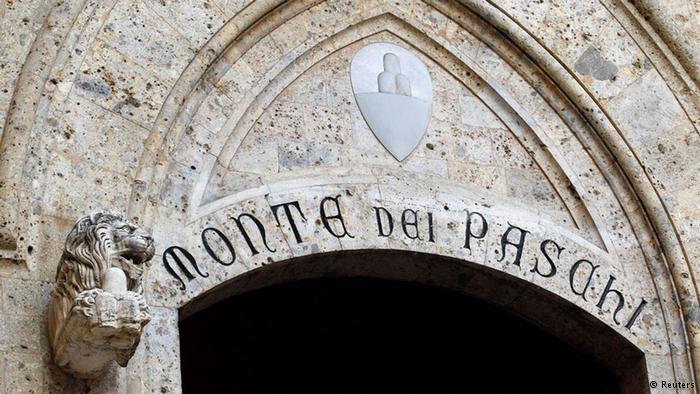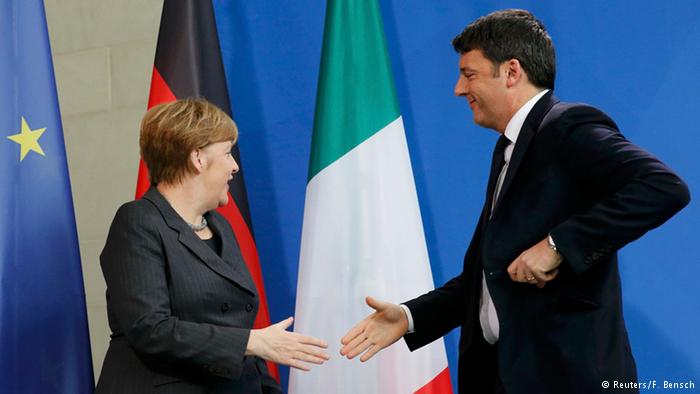Banks
Italy’s 200-Billion-Euro Problem
Italy has a massive Bankenproblem. With the EU, the country is now on the creation of Bad Banks for bad loans agreed to. You can the problems really be solved?

Shares of Banca Monte dei Paschi di Siena lost since the beginning of the year up to 40 percent
Italy is no longer the Problem in Europe, but had done its homework, said Italy’s Prime Minister Matteo Renzi on Friday after a Meeting with the German Chancellor Angela Merkel in Berlin. The tremendous difficulties of the Italian banking system, he may not have meant.
Up to 40 percent of the shares of Italian banks since the beginning of the year lost value. Approximately 17 percent of all loans are according to calculations of the European banking authority EPO lazy, there is a risk of losses in the amount of 200 billion euros, which is the highest level for 20 years.
The Problem concerned not only the banking sector itself, but lähme the entire Italian economy, says Jörg Krämer, chief economist at Commerzbank. Also the loose monetary policy of the European Central Bank, actually credit conditions in the crisis countries is to improve, am just Smoking away my then ineffective. “If banks themselves on many bad loans sit, then give no money to companies”, says Krämer for DW.
Many Bad Banks
To the Problem to get a grip, Italy after long negotiations with the European Commission agreed to set up a Bad Bank to be set up. More precisely: many Bad Banks for each of the ailing Institute. On these special-purpose entities, banks can your defaultable loans overwrite and the state secure.
After the Plan on Wednesday was announced, lost of Italy Bank shares next. This is an indication that the solution is not a free ride at the expense of taxpayers. The approach was the opposite, “very free market”, says Thomas Hartmann-Wendels, Director of the Institute for Banking at the University of Cologne.
“The loans are not to the original prices but at market prices. That is significantly less, and leads to the fact that the banks now only once losses have to realize.”
No gift to the banks
In addition, the banks for the hedging of a risk premium to the state to pay. “So it’s not a gift to banks”, says Hartmann-Wendels, “but the banks have to for their mistakes in the past to pay. The are now visible, and therefore, the markets are scared.”
Should end up with fewer credits than it was feared, could the state even make a profit, otherwise, pay it on it: “You still don’t know who is the better of the Deal makes. But this is the essence of assumption of risk.”
The decision for each Institute a separate Bad Bank set up, instead of a great for all, whether a market-based economy. “Now every Bank exactly for the risks of pay which they previously received is,” says Hartmann-Wendels. “At a big Bad Bank migrates everything in a pot and securing the loans by all banks lump sum paid.”

Matteo Renzi (r.) at the Meeting with German Chancellor Angela Merkel on Friday in Berlin
Stalled reforms
However, even if the Bad Banks as planned to be set up, Italy’s problems are not yet solved. “With the Bad Bank removed to get to the Legacy of the past, so Hartmann-Wendels, “but that alone does not guarantee better future.”
In order to achieve, must the country at last the long delays in structural reform to implement, says Commerzbank economist Krämer. “There is an economic Reformstillstand, very high labour costs, stagnating productivity, and a totally inefficient public administration.”
Only through reform will the situation of the Italian companies are improving, believe Krämer, and only then will the number of bad loans decrease again.
Prime Minister Renzi sees himself as a convinced Reformer. In Berlin, however, he called in the direction of the European Commission more flexibility in the budget deficit, because it is more money spend than planned.
